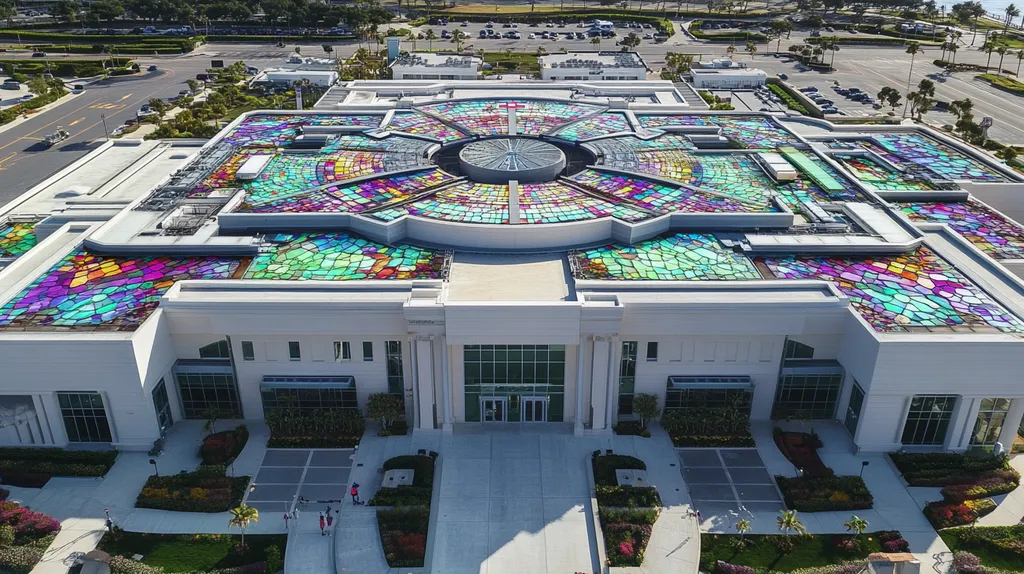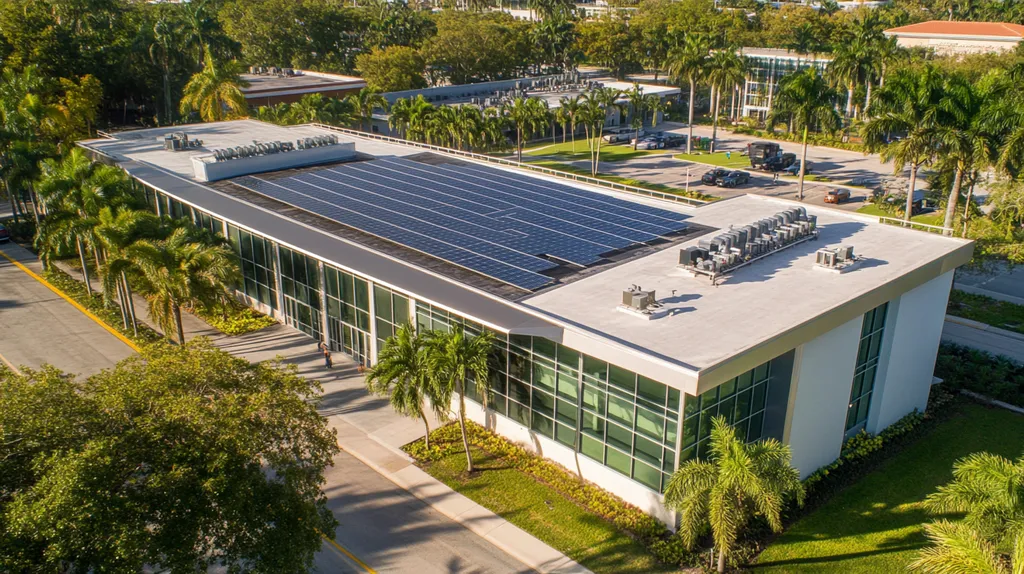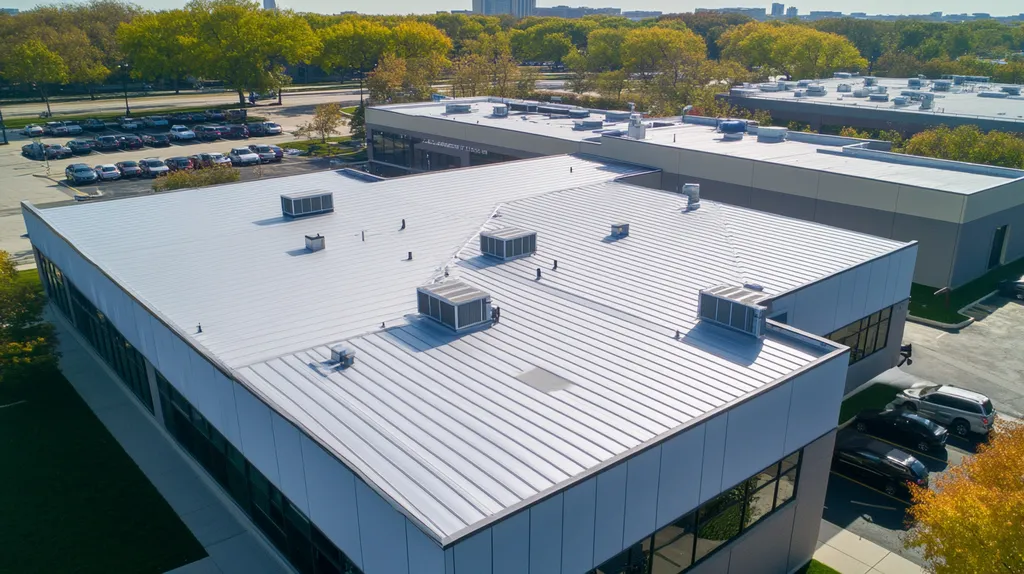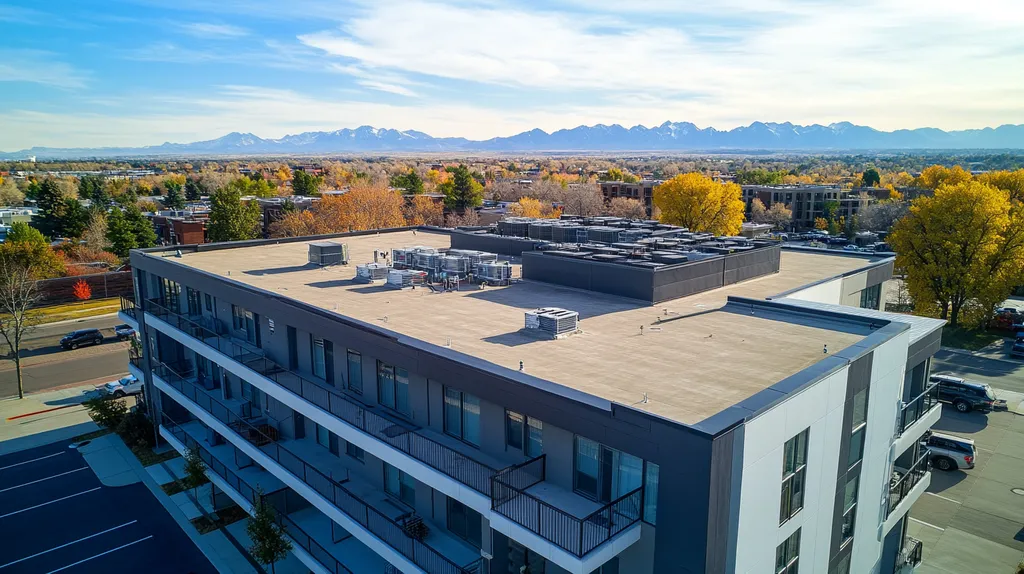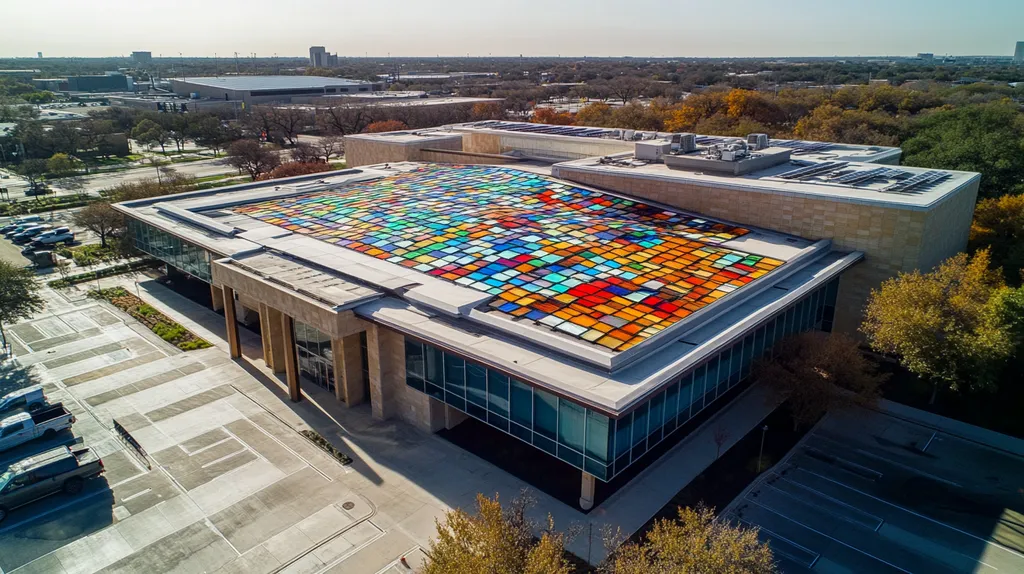Welcome to today’s Battle Royale featuring two roofing heavyweights: “Class A” in the east corner versus “Class B” in the west!
Tonight’s showdown pits these contenders against each other across six punishing rounds designed to test every aspect of their performance for Fire Testing Certifications for Industrial Roofs.
At stake? Millions in potential costs, decades of building protection, and the critical performance demands of modern commercial and industrial facilities.
Our professional judging panel will evaluate each round on technical merit, real-world performance, and value delivery. After all six rounds, we’ll declare our ultimate champion.
Ladies and gentlemen, facility managers and building owners… it’s time to rumble!
ROUND 1: INITIAL COSTS & INSTALLATION
When it comes to protecting industrial facilities from fire hazards, choosing between Class A and Class B roofing isn’t just about meeting code requirements – it’s about safeguarding millions in assets and protecting human lives. The International Building Code (IBC) mandates specific fire ratings for roof coverings, making this decision a critical factor in both initial construction and long-term facility protection.
Material Expenses
Class A roofing systems require specialized materials engineered to withstand severe fire exposure, incorporating multiple protective layers and fire-resistant components. These premium materials typically cost 25-40% more than standard roofing materials.
All roof coverings must be tested in accordance with ASTM E 108 or UL 790 standards, with Class A materials undergoing the most rigorous testing protocols. (source: Versico)
Class B materials, while still fire-resistant, use less expensive components and fewer protective layers. This makes them more budget-friendly initially but potentially more vulnerable to severe fire exposure.
While Class B offers immediate cost savings, Class A’s superior protection and longer lifespan provide better long-term value, giving Class A the ADVANTAGE in material expenses.
Installation Complexity
Installing Class A roofing systems demands precise attention to detail and specialized expertise. Multiple protective layers must be properly integrated to maintain the system’s fire-resistant properties.
Contractors need specific certifications and training to install Class A systems, which can increase labor costs. However, this expertise ensures proper installation and maximum fire protection.
Class B installations are generally more straightforward and require less specialized training. This typically results in lower labor costs and faster completion times.
The additional complexity of Class A installations directly contributes to superior fire protection, earning Class A the ADVANTAGE in this category.
Project Timeline
Class A roof installations typically require 20-30% more time to complete due to their multiple protective layers and precise installation requirements. This extended timeline can impact facility operations and production schedules.
The additional time investment for Class A installations includes more thorough inspections and testing to ensure all fire-resistant components are properly integrated.
Class B installations move more quickly due to simpler materials and less stringent installation requirements. This can minimize facility disruption and get operations back to normal faster.
While Class B offers faster completion times, the additional time invested in Class A installations directly contributes to superior protection, resulting in a TIE for this category.
ROUND 1 WINNER: Class A
ROUND 2: DURABILITY & LIFESPAN
When evaluating industrial roofing systems, durability and lifespan directly impact both safety and financial outcomes. Fire-resistant roofing represents a critical investment, with proper selection potentially saving millions in damage prevention and extended service life.
The stakes are particularly high for manufacturing and storage facilities, where a compromised roof can lead to catastrophic losses. Understanding how different fire ratings affect long-term performance helps facility managers make informed decisions that protect both assets and operations.
Durability Factors
ASTM E108 testing evaluates how roofing materials perform under different levels of fire exposure, with Class A materials withstanding the most severe conditions. These materials maintain their protective properties even after extended exposure to intense heat and flames. (source: Intertek)
Class A systems incorporate multiple protective layers that work together to resist deterioration from extreme temperatures, UV exposure, and environmental stress. This robust construction helps prevent premature aging and maintains fire resistance throughout the roof’s service life.
Class B materials, while fire-resistant, may show earlier signs of wear when exposed to severe conditions. Their moderate fire protection capabilities can degrade more quickly over time, potentially compromising the system’s overall effectiveness.
For durability factors, Class A earns the clear ADVANTAGE due to superior resistance to both fire and environmental stressors.
Expected Lifespan
Class A roofing systems typically deliver 25-30 years of reliable service when properly maintained. Their superior resistance to severe fire exposure helps prevent damage that could otherwise shorten their functional lifespan.
The enhanced durability of Class A materials means they retain their protective properties longer, even in harsh industrial environments. This extended service life helps reduce the total cost of ownership over the building’s lifecycle.
Class B systems generally last 15-20 years under optimal conditions. However, their moderate fire resistance may necessitate earlier replacement in high-risk environments or after exposure to severe conditions.
The significant lifespan difference gives Class A the ADVANTAGE in this category.
Maintenance Requirements
Class A systems typically require less frequent maintenance due to their superior materials and construction. Regular inspections can identify potential issues before they compromise the roof’s fire-resistant properties.
The robust nature of Class A materials means repairs are usually less extensive when needed. This reduces both maintenance costs and facility downtime over the system’s lifetime.
Class B roofs often need more frequent inspections and maintenance to ensure their fire-resistant properties remain effective. Their moderate protection level may require more regular repairs to maintain safety standards.
The lower maintenance burden gives Class A the ADVANTAGE in this category.
ROUND 2 WINNER: Class A
ROUND 3: PERFORMANCE FACTORS
Fire testing certifications play a pivotal role in protecting industrial facilities, with recent data showing fire-related losses in commercial properties exceeding $3 billion annually. For facility managers and property owners, understanding performance differences between Class A and Class B roofing isn’t just about meeting code – it’s about preventing catastrophic losses and ensuring business continuity.
Fire Resistance Performance
Class A roofing systems represent the highest level of fire protection available, designed to withstand severe exposure while preventing flame spread. These systems excel at containing fires at their point of origin, providing crucial time for emergency response.
Class B roof coverings are designed for moderate fire exposure, with specific testing parameters including resistance to a 6″ by 6″ burning brand weighing 500 grams and maximum flame spread of 8 feet. (source: Intertek)
While Class B systems offer adequate protection for some applications, they may not provide sufficient defense in high-risk industrial environments where severe fire exposure is possible.
Given the substantial difference in fire resistance capabilities, Class A earns the ADVANTAGE in this category.
Environmental Impact Resistance
Class A roofing systems maintain their fire-resistant properties even when exposed to harsh environmental conditions. Their robust construction helps prevent degradation from UV exposure, chemical exposure, and temperature fluctuations common in industrial settings.
Class B materials may show more rapid deterioration when faced with similar environmental challenges. This degradation can compromise their moderate fire resistance over time, potentially leaving facilities vulnerable.
The superior resistance to environmental factors while maintaining fire protection gives Class A the ADVANTAGE in this category.
System Integration Performance
Class A systems excel at maintaining their fire-resistant properties when integrated with other rooftop components like HVAC units, vents, and safety equipment. Their comprehensive protection extends to these critical connection points.
Class B roofing materials may require additional modifications or protective measures around rooftop penetrations and equipment. These potential weak points can compromise the overall system’s fire resistance.
The superior integration capabilities and maintained protection at system interfaces gives Class A the ADVANTAGE in this category.
ROUND 3 WINNER: Class A
ROUND 4: MAINTENANCE REQUIREMENTS
Maintaining fire-resistant roofing systems represents a critical responsibility for industrial facility managers. With fire-related losses in commercial properties reaching billions annually, proper maintenance directly impacts both safety and asset protection. Understanding the maintenance requirements between Class A and Class B systems helps facility managers develop effective strategies that balance protection with resource allocation.
Inspection Requirements
Class A roofing systems require comprehensive inspections to maintain their superior fire resistance capabilities. These inspections must evaluate multiple protective layers and components to ensure the system maintains its rated performance level.
Regular inspections for Class A systems typically occur quarterly, with detailed documentation of any changes in material condition or performance. Special attention focuses on areas around roof penetrations, flashings, and other potential vulnerability points.
Class B systems generally require monthly inspections due to their lower resistance thresholds. Their moderate protection level demands more frequent monitoring to identify potential degradation before it compromises fire resistance.
While Class B requires more frequent inspections, Class A’s comprehensive protection and longer inspection intervals earn it the ADVANTAGE in this category.
Repair Protocols
Class A systems incorporate highly engineered materials that must meet specific ASTM E108 testing standards, requiring specialized repair procedures to maintain their severe fire exposure resistance. These repairs demand certified technicians and approved materials to preserve the system’s fire rating. (source: Intertek)
When repairs are needed on Class A systems, they typically address isolated issues before they can affect the broader system. This proactive approach helps maintain optimal fire resistance across the entire roof surface.
Class B repairs often require more frequent intervention due to their moderate protection level. Minor issues can quickly escalate, potentially compromising the system’s fire resistance capabilities.
The superior durability and targeted repair approach gives Class A the ADVANTAGE in this category.
Preventive Maintenance
Class A systems benefit from robust preventive maintenance programs that focus on preserving fire-resistant properties. These programs typically include debris removal, drainage maintenance, and periodic reapplication of protective coatings.
The comprehensive nature of Class A preventive maintenance helps extend system lifespan while ensuring consistent fire protection. This approach often reduces long-term costs despite higher initial maintenance investments.
Class B systems require more frequent preventive maintenance interventions to maintain their moderate fire resistance. This increased maintenance frequency can lead to higher cumulative costs and more facility disruptions.
The more efficient and effective preventive maintenance approach gives Class A the ADVANTAGE in this category.
ROUND 4 WINNER: Class A
ROUND 5: SUSTAINABILITY CREDENTIALS
In today’s industrial environment, sustainability isn’t just about being green – it’s about protecting both assets and the planet. With increasing environmental regulations and rising energy costs, roofing decisions impact everything from carbon footprints to operational expenses. The fire-resistance requirements that differentiate Class A and Class B systems also influence their environmental impact, recyclability, and energy efficiency.
Environmental Impact
Materials labeled non-combustible for Class A systems undergo rigorous testing that simulates fire controlled by specific wind conditions, requiring more advanced manufacturing processes and materials. These materials are exposed to flame produced by a gas burner with a simulated 12-mph wind, demanding robust construction methods. (source: VTEC Laboratories)
Class A systems often incorporate recycled content and low-VOC materials, reducing their environmental footprint while maintaining superior fire protection. Their longer lifespan also means fewer replacement cycles and less manufacturing impact over time.
Class B systems typically use more traditional materials with higher environmental impact. Their shorter lifespan results in more frequent replacements, increasing the overall environmental burden.
The combination of advanced materials and longer service life gives Class A the ADVANTAGE in environmental impact.
Recyclability
Modern Class A roofing systems increasingly feature materials designed for end-of-life recycling. Many manufacturers now offer take-back programs specifically for these high-performance materials.
The engineered components in Class A systems can often be separated and processed for reuse in new roofing materials. This circular approach helps reduce landfill waste while conserving raw materials.
Class B materials generally have fewer recycling options due to their composition and manufacturing processes. Their moderate fire resistance often comes from treatments that can complicate recycling efforts.
The superior recycling capabilities and manufacturer support gives Class A the ADVANTAGE in recyclability.
Energy Efficiency
Class A roofing systems frequently incorporate reflective surfaces and advanced insulation as part of their fire-resistant design. These features help reduce cooling loads and improve building energy performance.
The multiple protective layers required for Class A fire resistance create additional insulation benefits. This enhanced thermal performance can significantly reduce HVAC energy consumption.
Class B systems typically offer basic thermal protection but lack the advanced energy-saving features found in Class A materials. Their simpler construction provides fewer opportunities for energy efficiency improvements.
The integrated energy-saving features give Class A the ADVANTAGE in energy efficiency.
ROUND 5 WINNER: Class A
ROUND 6: SPECIALIZED APPLICATIONS
In specialized industrial environments, the stakes for proper fire protection couldn’t be higher. Manufacturing facilities, chemical plants, and high-temperature processing centers face unique fire risks that standard solutions may not adequately address. The difference between Class A and Class B fire ratings becomes especially critical when extreme conditions push roofing materials to their limits.
High-Temperature Environments
The Standard Test Methods for Fire Tests of Roof Coverings include specific evaluations for extreme heat conditions, with Class A materials tested under the most severe circumstances. These tests simulate real-world scenarios where roofing materials must maintain their integrity under intense heat and flame exposure. (source: VTEC Laboratories)
Class A roofing systems excel in environments with constant high temperatures, such as industrial processing facilities or manufacturing plants with heat-intensive operations. Their superior construction maintains fire resistance even when subjected to prolonged heat exposure.
Class B materials, while adequate for standard conditions, may show signs of degradation when exposed to sustained high temperatures. This vulnerability can compromise their fire-resistant properties over time, particularly in facilities with heat-generating equipment or processes.
For high-temperature applications, Class A earns the clear ADVANTAGE due to its superior heat resistance and maintained performance under extreme conditions.
Chemically Aggressive Environments
In facilities handling corrosive chemicals or caustic materials, roofing systems must resist both chemical degradation and maintain fire protection. Class A systems typically incorporate advanced materials and protective layers specifically designed to withstand chemical exposure.
These superior materials help Class A systems maintain their fire-resistant properties even when exposed to industrial chemicals, acids, or alkaline substances. This dual protection is crucial in preventing chemical exposure from compromising fire safety.
Class B systems generally offer less resistance to chemical exposure, potentially leading to accelerated degradation of their fire-protective properties. This weakness can create vulnerable points where both chemical containment and fire protection are compromised.
The superior chemical resistance and maintained fire protection gives Class A the ADVANTAGE in this category.
Industrial Manufacturing Settings
Manufacturing environments present unique challenges where fire protection must integrate seamlessly with production requirements. Class A systems provide comprehensive protection while accommodating necessary rooftop equipment and ventilation systems.
These systems maintain their fire-resistant properties even around complex manufacturing infrastructure like exhaust stacks, ventilation units, and process equipment penetrations. Their robust construction helps prevent weak points where fire could potentially spread.
Class B materials may require additional modifications or reinforcement around manufacturing infrastructure, potentially creating vulnerabilities. Their moderate fire resistance may not adequately protect against the specific risks present in industrial manufacturing settings.
The superior integration capabilities and comprehensive protection gives Class A the ADVANTAGE in manufacturing applications.
ROUND 6 WINNER: Class A
AND THE WINNER IS…
Ladies and gentlemen, after six grueling rounds of technical evaluation, we have our verdict. In a stunning display of superior performance across every category, Class A roofing emerges as our undisputed champion with a clean sweep victory!
Class A dominated the competition with its superior fire resistance, extended lifespan, and remarkable durability. From initial installation through decades of service, this heavyweight champion proved why it’s the preferred choice for critical industrial applications.
But don’t count Class B out entirely! In situations where moderate fire risk meets tight budgets, particularly in smaller commercial properties with lower hazard levels, Class B can still deliver a solid performance at a more accessible price point.
However, we must emphasize that every facility faces unique challenges. Local building codes, environmental conditions, and specific operational requirements all play crucial roles in determining the right roofing system. This analysis provides general guidance, but consultation with qualified roofing professionals remains essential for proper system selection.
Remember, champions: in the high-stakes arena of industrial roofing, there’s no such thing as a rematch when fire protection fails. Choose your contender wisely, because when it comes to protecting your facility, you’re betting on more than just the next round – you’re investing in your operation’s future survival.
FREQUENTLY ASKED QUESTIONS
Q. What are the initial costs of commercial roofs?
A. When selecting between Class A and Class B, initial costs differ significantly. Class A systems require specialized, premium materials that can be 25-40% more expensive than Class B options. While initial investments may be higher for Class A, the long-term benefits often justify the costs, particularly regarding asset protection.
Q. How do Class A and Class B roofs compare in durability?
A. Class A roofs are designed for superior durability, providing up to 30 years of reliable service. They resist extreme conditions better than Class B materials, which typically last about 15-20 years. This difference highlights how choosing Class A can save costs by reducing the need for early replacements under tough conditions.
Q. What should I know about fire resistance for industrial roofs?
A. Fire resistance plays a crucial role in roofing choices. Class A roofs offer the highest level of protection against severe fire conditions, effectively preventing flame spread. In contrast, Class B roofs provide only moderate protection, which may not be adequate for high-risk industrial environments, potentially leading to catastrophic losses.
Q. How often should I maintain a commercial roof?
A. For Class A roofs, inspections are typically recommended quarterly to ensure optimal performance and address potential issues early. Class B roofs usually need monthly checks due to their lower fire resistance. Regular maintenance is key to extending the lifespan and effectiveness of any roofing system.
Q. Which roof type is more environmentally sustainable?
A. Class A roofs typically have a lower environmental impact than Class B systems. They often include recycled content, advanced materials, and longer lifespans, which help reduce waste. In contrast, Class B roofs may contribute to more frequent replacements, raising overall environmental concern.
Q. Can Class A roofs handle high-temperature environments?
A. Absolutely! Class A roofing systems are specifically designed to maintain their integrity under extreme heat. They perform well in environments like manufacturing plants where high temperatures are a regular occurrence, providing unmatched fire protection compared to Class B materials.
Q. What are the advantages of roof systems in specialized applications?
A. Specialized applications often require enhanced fire protection and safety features. Class A roofs excel in environments with unique challenges, such as chemical plants or high-temperature processing. Their design ensures robust performance, preventing fire spread and maintaining safety across diverse industrial needs.

